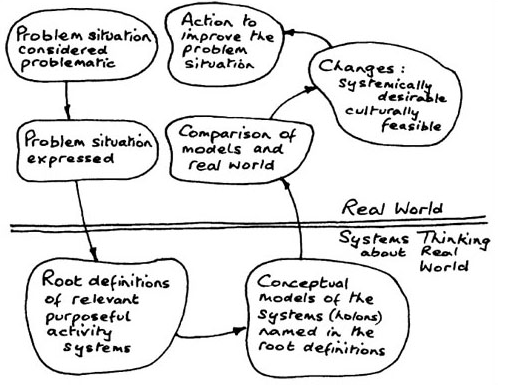Member-only story
How I’ve blended systems thinking into my design work
The shadow of systems thinking looms over everything I do, partly because I really enjoy learning and understanding complex things, but more so because the nature of our problems—and thus, solutions—avail themselves very differently when viewed through this lens.
…systems thinking is also a sensitivity to the circular nature of the world we live in; an awareness of the role of structure in creating the conditions we face; a recognition that there are powerful laws of systems operating that we are unaware of; a realization that there are consequences to our actions that we are oblivious to.
Soft Systems Methodology gave me my start
My first formal exposure to systems thinking began with Soft Systems Methodology, which was an elective module from my HCI Masters programme at UCL.
SSM grew out of the systems engineering domain, and is a very popular approach used by systems thinking practitioners. But in trying to develop systems solutions for organisations, SSM early pioneers used the word “soft” to reference complex, often social situations involving divergent views.

While I feel the methodology itself is a bit heavy for the development of digital products and services, I really loved how SSM gave me a new language for understanding and solving for organisational and social contexts.
Over the years, I’ve experimented with different ways bring systems perspectives into my work. And because proper systems work from a UX designer can sometimes alienate or confuse colleagues and stakeholders (e.g. they asked for a wireframe), I’ve ended up preferring tools that are simple, visual and flexible—tools that I can pull out at a minutes’ notice and map lots of things out very quickly, refine them, expand on them collaboratively with others, trash it and start over, and do it all over again.
These are just a few ones I’ve been coming back to, helping me connect the dots to the larger whole, to see the meaning and connectedness in the work that we do, the solutions we put out in the world, and how the world behaves around it.



